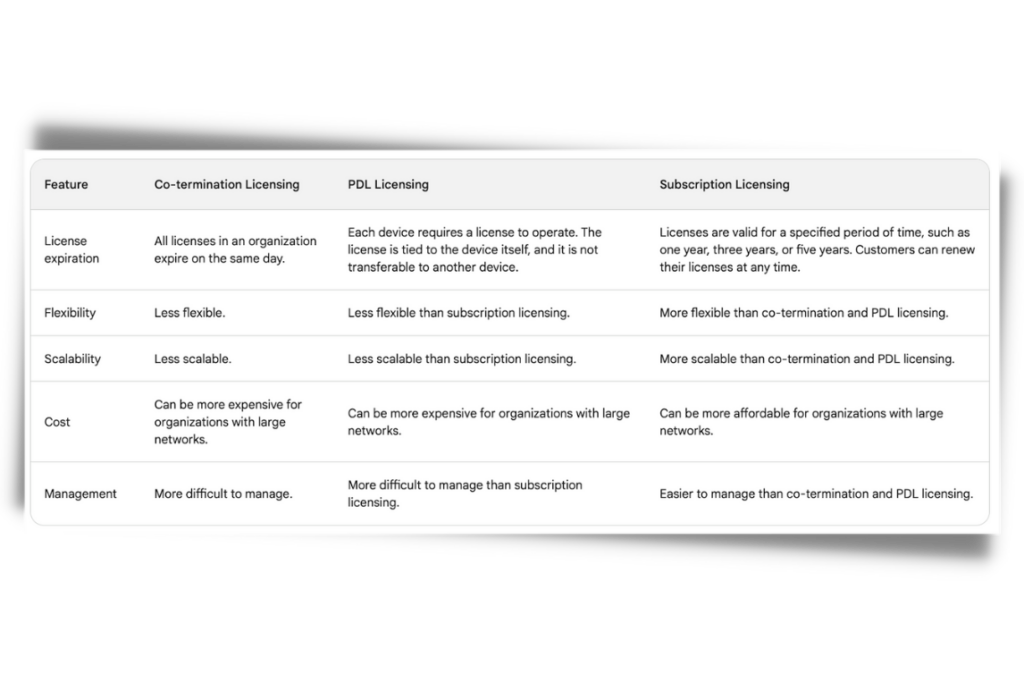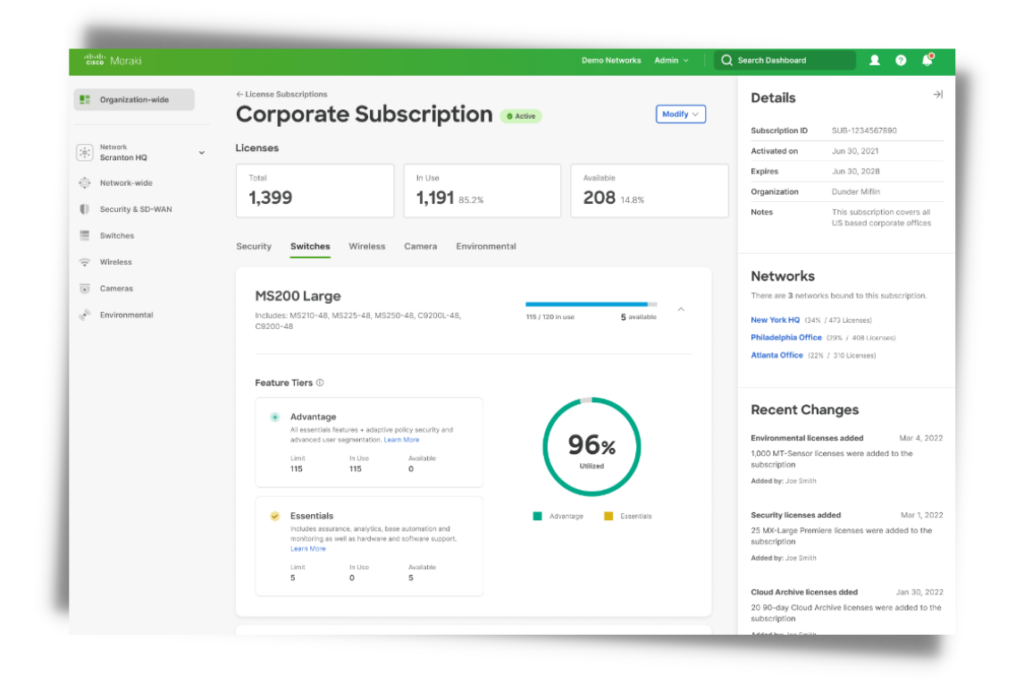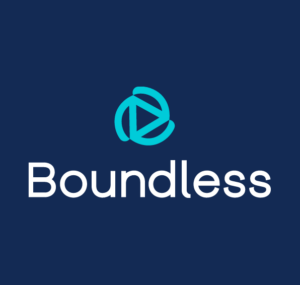Cisco Meraki has recently announced a new subscription licensing model for its products. The new model, which will be available in the US and EU on September 19, 2023, is designed to be more flexible and scalable than the existing licensing models.
Let’s dive into the passionate world of Meraki licenses!
Cisco Meraki is currently offering two licensing models:
The co-termination licensing, has four main challenges:
The PDL model is more flexible than the co-termination licensing model, as it allows organizations to add or remove devices as needed without having to purchase new licenses. However, the PDL model also has challenges:
The new subscription licensing model addresses all of these challenges. With subscription licensing, organizations can purchase licenses for individual devices or groups of devices. The licenses are valid for a specified period of time, and customers can renew them at any time. This gives organizations more flexibility to add or remove devices as needed, and to adjust their licensing costs accordingly.
Subscription licensing also makes it easier for organizations to scale their networks. As an organization’s network grows, they can simply add more licenses without having to purchase new hardware. This can save organizations money and time.
Here is a table summarizing the differences between co-termination, PDL, and subscription licensing for Cisco Meraki:

Per-device licensing: This means that customers only pay for the licenses they need. This is in contrast to the previous co-termination licensing model, where all licenses in an organization expired on the same day. This made it difficult to budget for licenses and scale networks.
Specified period of time: The licenses are valid for a specified period of time, such as one year, three years, or five years. This gives customers more control over their costs and allows them to budget accordingly. For example, if an organization knows that they will be adding new devices in the next year, they can purchase licenses for those devices in advance.
Flexible renewal: Customers can renew their licenses at any time. This gives customers more flexibility to adjust their licensing costs as needed. For example, if an organization’s network needs change, they can renew their licenses for a shorter or longer period of time.
Easy scaling: Customers can easily add or remove devices as needed without having to purchase new hardware. This can save customers money and time. For example, if an organization needs to add a new branch office, they can simply add licenses for the new devices without having to purchase new hardware.
Simplified ordering and renewal process: Customers can easily order and renew their licenses through the Meraki dashboard. This makes it easy for customers to manage their licenses.
24/7 technical support: Customers receive 24/7 technical support for their Meraki devices and licenses. This gives customers peace of mind knowing that they will have support if they need it.
Hardware warranty: Customers receive a hardware warranty for their Meraki devices. This gives customers peace of mind knowing that their devices are covered if they break down.
Access to the latest features and updates: Customers have access to the latest features and updates for their Meraki devices and licenses. This ensures that customers are always using the latest and greatest technology.

More flexibility: Customers have more flexibility to add or remove devices as needed, and to adjust their licensing costs accordingly.
Easier scaling: Customers can easily scale their networks without having to purchase new hardware.
Simplified ordering and renewal process: Customers can easily order and renew their licenses through the Meraki dashboard.
24/7 technical support: Customers receive 24/7 technical support for their Meraki devices and licenses.
Hardware warranty: Customers receive a hardware warranty for their Meraki devices.
Access to the latest features and updates: Customers have access to the latest features and updates for their Meraki devices and licenses.
Discounts for organizations with multiple licenses: Customers can save money by purchasing multiple licenses or by taking advantage of discounts.
Ability to purchase licenses on a month-to-month basis: Customers can purchase licenses on a month-to-month basis, which gives them more flexibility and control over their costs.
Overall, the new subscription licensing model of Cisco Meraki is a more flexible, scalable, and affordable way to license Meraki products. It is a good choice for organizations of all sizes that want to future-proof their networks and save money on licensing costs.
1207 Delaware Ave #552, Wilmington, Delaware 19806
Americas: +1 (347) 464-6510 - EMEA: +33 (0) 181 22 12 80

We are proud to announce the launch of our new brand identity, marking a significant milestone in our evolution. This rebrand reflects our commitment to continuous innovation, agility, and automation — always moving forward.